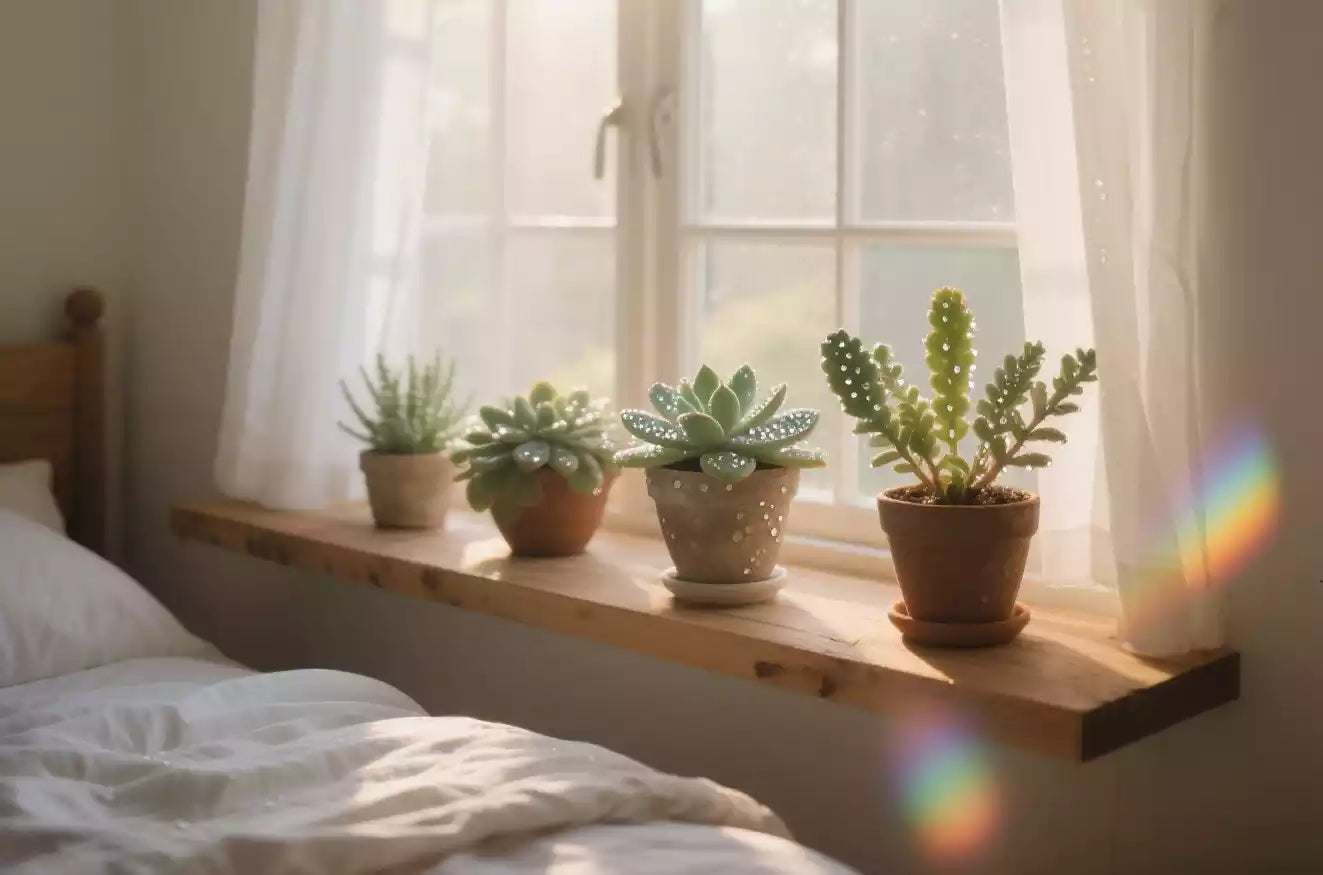
Guide to the best time to bring succulents indoors
Imagine this scene: morning light filters through the sheer curtains, casting a rainbow-like glow on the succulent leaves on the windowsill. Late at night, while working overtime, the "Lithops" on your desk glows like a luminous pebble, instantly dispelling fatigue — this is the healing magic of indoor succulents. Don't let the outdated notion that "succulents can only be grown outdoors" hold you back. Today, we'll guide you through the complete guide to bringing desert fairies into your home, transforming your living room and bedroom into vibrant, natural healing spaces!
Why are succulents the ideal companions for indoor gardening?
Succulents are the "ultimate low-maintenance plants": their fleshy stems and leaves can store large amounts of water, and their drought-tolerant nature means you can skip watering them once or twice without issue, making them perfect for busy urban lifestyles. Even more captivating is their "plant aesthetics"—leaf shapes range from round, like bear paws, to angular, like crystals; colors include jelly pink, gradient purple, and deep green, and textures resemble zebra stripes or star patterns. Every pot is a living work of art, infusing your home with natural vitality.

Golden Rules for Indoor Succulent Success:
Light Management: Recreate Desert Sunlight Conditions
- Natural light preference: South- or west-facing windowsills are ideal, with 4–6 hours of direct sunlight daily, to maintain a compact plant shape and vibrant colors.
- Artificial lighting solution: LED grow lights ($15–50) are essential for apartments or for use in winter. Hang them 15–30 cm above the plants and operate for 10–12 hours daily to simulate long daylight hours.
Watering Philosophy: The Wisdom of Less is More
- Dry-Wet Judgment Method: Insert your finger 2 cm into the soil; water only when it feels dry. After watering until water drains from the bottom of the pot, promptly remove any standing water from the tray to prevent root rot.
- Tools and Techniques: Use a fine-spouted watering can ($3–8 ) for precise water control, thereby avoiding wetting the leaves. Ceramic pots require a layer of gravel or clay pellets at the bottom to enhance drainage.
- Seasonal Adjustments: Water every 1–2 weeks during the spring and summer growing seasons and every 3–4 weeks during the fall and winter dormant periods. Set a phone reminder to check the soil regularly.
Soil Formula: Create a "plant villa" that breathes
- Professional Mix Recommendation: 50% granular soil (volcanic rock/pumice/coarse sand) + 30% peat moss + 20% perlite, balancing drainage and water retention.
- Advanced care tips: California growers add crushed eggshells to supplement calcium. The soil mix can be baked in a 200°F (93°C) oven for 30 minutes to sterilize and eliminate pests.
- Lazy gardener's choice: The One Bloom succulent-specific soil, formulated for American climates, is ready to use for added convenience.

Temperature and humidity management: Create a comfortable growing microenvironment
- The ideal temperature range: 60-80°F (15-27°C) is the optimal growth temperature range. Keep away from air conditioning vents and radiators to avoid sudden temperature changes.
- Humidity adjustment plan: Succulents prefer low-humidity environments. In dry regions, place pebbles in a tray with water to increase local humidity through evaporation (avoid direct spraying).
Common problem troubleshooting guide: 3 steps to solve care issues
Stretching and fading
- Immediately move to a well-lit area or turn on grow lights. Trim the stretched branches for propagation; new plants will be more compact after 2 weeks.
Leaves are turning watery and soft
- Stop watering and ensure proper ventilation. Remove the plant to inspect the roots. If the roots are rotten, trim them and soak them in a fungicide. Then, let them dry for 2 days before repotting in fresh, dry soil.
Scale Insect Infestation
- Wipe leaves with a cotton swab dipped in 75% alcohol. Isolate infected plants to prevent spread. Sprinkle white powder on the pot surface to prevent recurrence. Healthy growth should resume within 1 week.

Start your indoor oasis plan today!
From the jade plant awakening in the morning light to the Lithops accompanying you into the night, succulents heal the fatigue of urban life with their silent vitality. Why not start with 3-5 basic varieties and try creative arrangements, such as wooden box mini-landscapes or glass hanging bottles? Witness the satisfaction of watching them grow from tiny seedlings to lush, overflowing plants. The One Bloom curates a selection of succulent varieties, from Cotyledon Tomentosa to color-changing Graptopetalum amethystinum (Rose)Walther. With a single click, desert elves can be delivered straight to your windowsill—this weekend, use succulents to plant a breathing oasis in your life!
Share